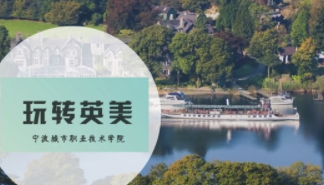
当前课程知识点:Culture and Tourism(International Edition) > Week 6: Affect and Emotion in Heritage Tourism > 6.2 Heritage Performance - Evidence from Australia, England and USA > 6.2.1 Heritage performance - reinforcement
返回《Culture and Tourism(International Edition)》慕课在线视频课程列表
返回《Culture and Tourism(International Edition)》慕课在线视频列表
那么什么是强化呢 来看看占主导的表演形式
这里有一些例子 说明人们在参观遗产地时正在强化什么
对这个人来说 它强化了我 它让我感激我的国家 并为之自豪
在这个国家如此自豪是一种被强化的重要感觉
这位来自英国 甚至 在很短的一段时间内感觉自己是历史的一部分
甚至是近代历史的一部分
它只是把一些东西带回来了——它强化了你对过去的感觉
每次我们来到这样的地方(这是一个澳大利亚的遗产地)
它都强化了我所看到的 让我在澳大利亚感觉很好
我并没有从这里拿走任何新的东西
但是我的知识和观点得到了加强
这就是我来的原因
此刻被强化的是民族主义情绪
但它也可以是对家庭身份的强化
对作为一个族群或社会阶层成员的特殊身份的强化
也可以是对社会阶层 政治观点和价值观的强化
所以 正如我所说 在一些地方重要的表演中
表演往往集中在两代人之间的交流
这可能是非常关键的 情感投入的表演
在国家遗产层面 当我测量参与记录的时候
我访谈的4500人中都是这其中的相关人员
参观游览登记可以简单地描述为舒适或不舒适
从这些数据中得出了什么
来自主要民族的访客 在访问自己国家的遗址时
来自主要民族的访客 在访问自己国家的遗址时
尤其是那些国家级叙述的地方
他们更倾向于在这些国家的叙述中 相对不加批判和强化情感投入
那些对所到国家的民族故事不太感兴趣的海外游客
会倾向于更批判性地参与进来
更多地思考各种可能性
并试图与人们和讲述的故事之间建立更积极的联系
那些来自非主流民族背景和
那些来自主流民族背景但受教育程度低的人
会更积极地投入到他们所参观的遗址上
会有更多的人意识到他们的情绪
并利用这些情绪来帮助他们理解遗址的意义
这确实说明了我所观察的三个国家的教育过程中存在的问题
你受教育程度越高
你就越不愿意或不太愿意谈论你与
遗产和过去有关的情感
但我发现
那些在情感上投入并有情感意识的人
是那些拥有某种程度的我们称之为情绪智力的人
它的意思是知道您有一个情感赞助者
然后运用这些情感来帮助你思考其中的意义
或你正在构建的遗产地含义
那些具有高情商或情绪智力的游客更愿意在认知上
在智力上参与他们所看的内容
现在 当被问到你为什么要来的时候
人们常说他们是出于教育原因而来的
如果我们使用正常的旅游技术来询问 您为什么要参观
大多数人会说 我是因为接受教育而来的
但是 如果我们更深入地研究和挖掘
但是 如果我们更深入地研究和挖掘
会发现他们中的许多人就会像这个女人那样承认
我应该说些类似的东西 你知道
我在这里接受教育学习 我应该这样说
但老实说
我所经历的就是享受这个地方的美丽
享受花园 享用美味的午餐
享受美好的一天
现在 正如我之前所说
教育通常是一种假设 即游客在英语环境中的行为
现在 为回答这个问题
您今天在这里看到的内容
是否有任何改变她对过去或现在的看法的东西
在我访谈的四五千名游客中 有20%的人说 是
而在国家身份认同的遗址 这个比率下降到了10%
我知道那些说 是 的人 如果他们的观点实际上发生了变化
我们确实提供了他们实际的观点已经发生改变的更多信息
因此 大约11%的人
他们对过去和过去的意义的看法发生了改变
目前 这再一次支持了人们参观遗址是为了强化表演的观点
-1.1 Introduction course outline and UNESCO World Heritage Program
--1.1.1 Introduction of culture and tourism course outline
--1.1.2 Introduction of UNESCO World Heritage Program(1)
--1.1.3 Introduction of UNESCO World Heritage Program(2)
-1.2 Cultural Heritage-1
--1.2.1 The meaning of culture heritage
--1.2.2 Criterion(i): masterpiece of human creative genius
--1.2.3 Criterion(ii): exhibit important interchange of human value
--1.2.4 Criterion(iii): bear a unique or at least exceptional testimony
--How can the public understand the importance of heritage?
-1.3 Cultural Heritage-2
--1.3.1 Criterion(iv): an outstanding example in human history
--1.3.2 Criterion(v): represent a culture or human interaction with environment
--1.3.3 Criterion(vi): associated with living traditions of outstanding universal significance
-1.4 Natural Heritage
--1.4.1 Natural heritage features, formations and criterions
--1.4.2 Cases studies of natural heritage
--Cultural landscape meanings: The case of West Lake, Hangzhou, China
--Week1 quiz
--How to access heritage of your hometown?
-2.1 Mixed Culture and Natural Heritage
--2.1.1 Mixed heritage operational guidelines and cases (1)
--2.1.2 Mixed heritage operational guidelines and cases (2)
--2.1.3 Mixed heritage operational guidelines and cases(3)
-2.2 Authenticity, Integrity and Cultural Routes
--2.2.1 How to determine authenticity and integrity
--2.2.2 Heritage routes and heritage canals (1)
--2.2.3 Heritage routes and heritage canals (2)
--What do you think about cultural heritage categories?
-2.3 Special Heritage and Sustainable
--2.3.1 Physical remains of the history of technology and industry
--2.3.2 Transboundary Heritage, Serial Heritage, Serial/Transnational Heritage
--2.3.3 Intangible cultural heritage
--2.3.4 UNESCO World Heritage and Sustainable Tourism Programme
--Recovering the Memory of Ourselves for the Sustainable Cites
--Week 2 quiz
--What do you think about cultural heritage categories?
-3.1 The Australia’s Heritage System and Sydney Opera House
--3.1.1 The Australian Heritage System
--3.1.2 Case Study: The Sydney Opera House
-3.2 Role of the ISCCL and Cultural Landscape (1)
--3.2.2 Uluru-Kata Tjuta National Park
--3.2.3 Honghe Hani Rice Terraces
-3.3 Role of the ISCCL and Cultural Landscape (2)
--3.3.1 West Lake cultural landscape (1)
--3.3.2 West Lake cultural landscape (2)
-3.4 Rural Landscapes as Heritage
--3.4.1 ISCCL Principles Concerning Rural Landscapes as Heritage
-3.5 Case Study: Mongolian Altai
--3.5.1 Nature Culture Integration & the Mongolian Altai(1)
--3.5.2 Nature Culture Integration & the Mongolian Altai(2)
--Week 3 quiz
--Discussion: What do you think is the role of ISCCL?
-4.1 Introduction of the Meaning of 'landscape’
--4.1.1 Brief introduction of landscape and culture
--4.1.2 The conceptual framework of cultural landscape
-4.2 Landscape Values
--4.2.1 The word “landscape” itself and differences in Western, Eastern
--4.2.2 Cultural significance for heritage source
--Discussion: What do you think the cultural landscape attracts you?
-4.3 Reading the Landscape: Identification and Assessment
--4.3.1 Planning model for heritage conservation management policy
--4.3.2 Cultural landscape resources evaluation steps
--Article: Cultural mapping: Intangible values and engaging with communities with some reference to As
-4.4 Case Study: Wingecarribee Historic Landscape
--4.4.1 Case study:Wingecarribee historic landscape study(1)
--4.4.2 Case study:Wingecarribee historic landscape study(2)
--Week 4 quiz
--Discussion: What should we do to strengthen the protection of cultural landscape?
-5.1 Indigenous Tourism
--5.1.1 Indigenous tourism background
--5.1.2 World heritage and indigenous peoples
--5.1.3 Tourism issues at Canadian indigenous world heritage sites
--Discussion: What challenges indigenous World Heritage faces?
--Article: State conceptions of indigenous tourism in Chile
-5.2 Case Study and Conclusion: Great Expectations for Tourism
--5.2.1 Case study Pimachiowin Aki
--5.2.2 Conclusions:Great Expectations for Tourism
--Disussion: Do you have any experience of indigenous tourism?
--Week 5 quiz
-6.1 The Definition of Heritage in Heritage Performance Study
--6.1.1 The definition of heritage in heritage performance study
--6.1.2 Heritage performance and meaning making
--6.1.3 Two key issues emerging from qualitative study
-6.2 Heritage Performance - Evidence from Australia, England and USA
--6.2.1 Heritage performance - reinforcement
--6.2.2 Heritage Performance - inter-generational communication and social values
--6.2.3 Heritage performance - recognition and respect
--6.2.4 Heritage performance - education
--Article:Theorizing museum and heritage visiting
-6.3 The Conclusion of Heritage Performance
--6.3 The conclusion of heritage performance
--Week 6 quiz
--Discussion: What kinds of heritage performances have you learned in this week?
--Final test
